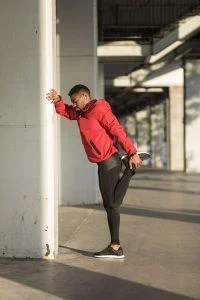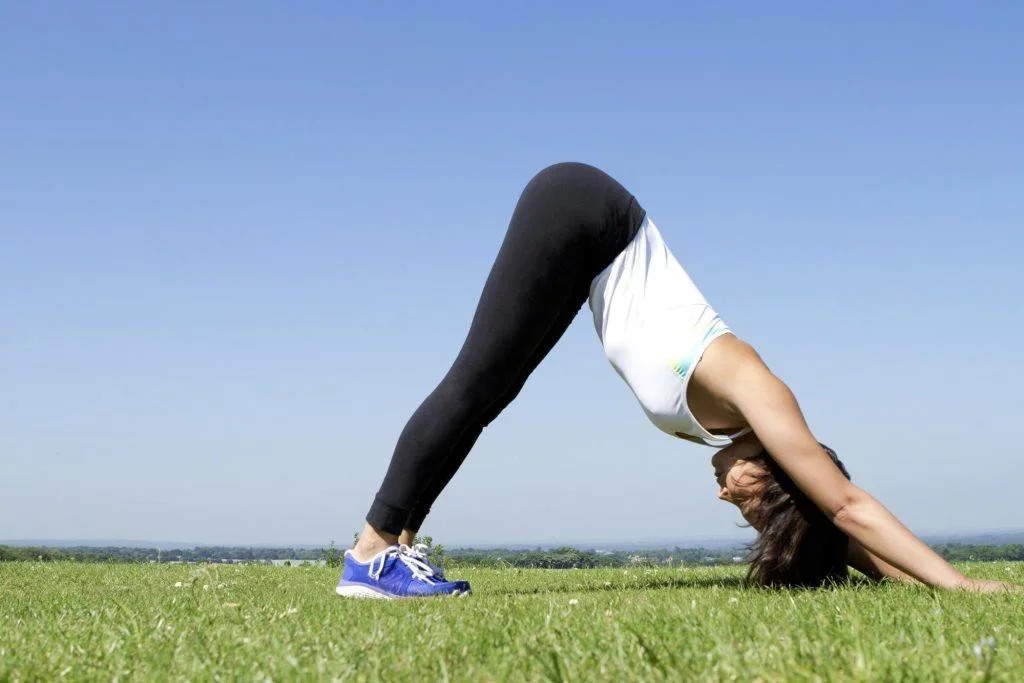The Top 5 Stretches Every Runner Should Do Before Going on a Run
If you’re looking to improve your running sessions, it might be as simple as allocating time for some important stretches before your run. In fact, a 2017 study found that including both dynamic and static stretching in a warmup routine increased runners’ speeds compared to those who did not stretch.
So how does stretching help? Stretching lengthens your muscles, giving them a better range of motion and increased flexibility. This increases their efficiency during repetitive exercises like running.
Muscles that are properly stretched and warmed up before exercise are also less likely to be injured because the increased flexibility lessens strain. It’s even been shown that stretching can help strengthen the knee joint, which is a common spot for injuries, and one that degrades faster in runners.
Before stretching, it’s important to understand what you should and should not be doing. First, you should never stretch “cold” muscles. Though our muscles are not literally cold, exercising increases our core temperature, as well as the circulation of blood and oxygen that makes muscles malleable and capable of doing more. If you try to stretch a muscle before it’s warmed up, you won’t be able to extend it completely, therefore risking injury.
You should also ease into your stretches. As you move slowly into the stretch, you’re giving your muscle time to gradually extend, rather than jerking it quickly. This will help to lengthen the distance of your stretches over time.
You also shouldn’t bounce while in a stretched pose. This can put a strain on the muscle and increase the likelihood of injury.
There are two different types of stretches: dynamic and static. Dynamic stretches are active and usually mimic the exercise that is about to be completed. Instead of being held in place, dynamic stretches are done in a moving repetition. Static stretches are usually held between 15 seconds to a minute, while slowly pushing deeper into the stretch over that period of time.
While dynamic stretching is typically suggested for cardiovascular activities like sports and running, studies have shown performance levels are similar between dynamic and static stretching. Using a combination of both or saving static stretching for cooldowns are both good approaches.
Below are five dynamic stretches that also incorporate some static stretching principles. They should be done before every run to maximize your performance.
Quadricep Stretch
Your quadriceps are the largest muscle in your body. They are found in the front section of your thigh and end at the knee. It’s particularly important to warm up and stretch these muscles, not only because of their size but also because they’re responsible for extending your leg, which is a vital move when it comes to running and walking.
To stretch your quadriceps, start by jogging in place for two to three seconds. Pause for a moment to bring your right foot up toward your butt and grab the foot with your hand, holding the stretch for two to three seconds. Release your foot back to the ground, then jog again for another two to three seconds before stretching on the left side. Repeat this set five to 10 more times.
Hamstring Stretch
The hamstrings can be found on the backside of your upper leg and run between your hip and knee. The hamstrings are particularly susceptible to injury, so it’s important to ensure that they are warmed up and stretched thoroughly before you exercise.
To stretch this muscle, begin by standing tall with your spine lengthened, shoulders back, and face looking forward. Extend both arms straight out in front of you. Beginning with your right leg, swing your leg forward and up as if you’re trying to kick your hands. Bring your right foot back down and alternate to your left foot. Continue for about 30 seconds. You can do this stretch standing in one spot or “walking” yourself around the room, whichever you find works best for you.
Hip Flexor Stretch
Your hip flexors go from either side of your lower spine down into your hip area and help move your legs and knees up toward your body when you’re running.
Hip circles can be a good way to stretch out your hip flexors. Begin by standing tall with your feet under your hips and hands on your sides. You can hold a chair or countertop with one hand if you need additional support or stability. Stand on your left leg and bring your right leg up slightly to the side, just a couple of inches off the ground. Gently swing your leg in small circles going the same direction for a count of 20 before switching directions for another count of 20. Lower your right foot back to the ground and switch to the left foot. If you are using support, turn the other way to switch sides; don’t reach across your body to support yourself with the arm from the side that you’re currently swinging.
Calf and Ankle Stretch
The calf is the largest muscle in your lower leg and is located on the backside of your leg, extending down from your knee and attaching to your heel via the Achilles tendon. Both your calves and your ankles need to be strong to support a full stride while running.
Using a mat or carpet, come down on your hands and knees, with your knees under your hips and your arms under your shoulders. Lift your torso up and back slightly, bringing your knees off the ground. You want to be in a wide V-pose, with your butt being the highest point. Your back should be flat, not rounded. Bend your right knee and push back into the straightened left leg to feel a stretch. Come back to the center and bend the left leg to stretch the right one. Alternate between legs almost as if you’re running in place for about 30 seconds. If you want to stretch a little deeper, hold the pose on either side for a few seconds after your initial 30-second warmup.
To get in an extra stretch for your ankles, add ankle rotations to this pose. Come back to your hands and knees, then extend your right leg straight behind you. Rotate the ankle in small, gentle circles for a count of 20 in one direction, then switch directions for another count of 20. Switch legs and repeat.
Side Stretch
Stretching your sides mostly targets your obliques, but can lengthen your abs as well. Keeping your core stretched is important for stability and mobility while you run.
To begin, stand with your feet under your hips, with your back tall and straight and your hands on your hips. Move your right foot forward into a lunge, lowering your left knee to the ground. Once you are in a lunge position, extend your left arm up and over your head, as if your arm is gently being pulled to the side. You should feel the stretch down the length of your left side. Return your arm down to your hip and come back up into the starting pose. Repeat the move five times on each side.
This stretch will also help lengthen your hip flexors, quadriceps, and hamstrings.
Stretching for Running
Performing dynamic stretches before running can help increase your mobility and flexibility, while also raising your core temperature. Stretching can even help protect your muscles from sprint-induced muscle damage.
You should not engage in dynamic stretching without first consulting your doctor if you are injured or if you are older than 65.
While stretching may seem simple, you’ll be amazed at your progress after just a few sessions of stretching before and after running.
Frequently Asked Questions
Will stretching help my performance?
There's no question that stretching is key to a good workout. It's probably the most often overlooked element of exercise. Yes, stretching will help your performance.
Will stretching tire me out?
You'll definitely feel a good stretching session but it shouldn't exhaust you.
Should I stretch after a run, or before?
Actually you should do both. Loosening up before a run helps get the blood flowing, and stretching after the run helps prevent stiffness.
Other Treadmill Reviews:
- Test HomePage
- NordicTrack Commercial X14i
- Echelon Stride
- NordicTrack C 590 Pro
- NordicTrack T 7.5 S - Pros & Cons (2024)
- Sole TD80 Treadmill Desk
- NordicTrack Commercial X11i
- NordicTrack T 8.5 S - Pros & Cons (2024)
- Horizon Elite T5
- Exerpeutic TF1000
- NordicTrack T 6.5 S - Pros & Cons (2024)
- ProForm Sport 5.0
- ProForm Premier 900
- ProForm ZT6
- NordicTrack FreeStride Trainer FS5i (Discontinued)
- Bowflex Max Trainer M5
- BowFlex TreadClimber TC100
- ProForm Power 795
- ProForm Sport 7.0
- NordicTrack Incline Trainer X15i
- NordicTrack C 1650 Treadmill
- Horizon Elite T9
- Official Boston Marathon Treadmill 4.0
- NordicTrack Treadmill Desk
- NordicTrack C 1630 Pro
- NordicTrack C 970 PRO
- Bowflex TC20 TreadClimber



